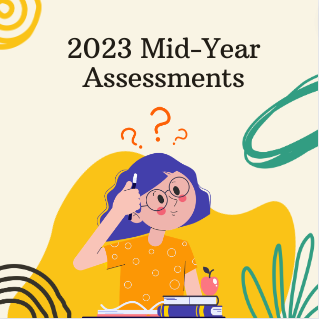
Following an all-too-short holiday break in December, students returned to face their worst fears: midterms.
The last few years, midterms were not a huge deal. 2020’s midterms were the last “normal” ones before the pandemic, and after two years without real mid-year exams, the goal this year was to return to how they used to be.
The year of 2021, understandably, did not hold midterms. With school being remote and student grades, attendance, and motivation at an all-time low, the exams were called off. Last year, 2022, midterms were barely an issue for many students.
Due to an increase in student absences, midterms would only affect a student’s grade if it was positive; any grade that would bring their overall grade down would not count. Instead, the results were for the teachers to use at their discretion to alter their learning plan.
While it may have seemed like a practical idea, it did not work out as administration expected. Once students found out their midterms were basically optional, many students stopped studying. Some students only answered one or two questions to just get credit for taking it without putting in any work.
Of course, this was not true of every student. But the fact of the matter was that the results of the midterms were not a fair nor accurate representation of how classes were progressing, and hence held no purpose.
This year, 2023, mid-year assessments will hold weight on students’ grades again. The exams, while minorly differing from class to class, are weighed similarly to a test for most classes and will count in the second quarter average. The hope is that the results will be more useful and accurate than last year.
As a result, many students are less than pleased with the change in policy. While it is unclear whether this policy will carry on next year, the shift from near-optional midterms into assessments graded like tests was more than many students were prepared for.
Prior mid-years and finals were each worth 10% of the yearly grade of a student. This sometimes brought immense stress to students and teachers to fully prepare for these assessments with the potential to make or break their grades.
Hence, this year is still less stressful for many students than it was pre-2020. It has become a bit of a balancing act for administration to attempt to return to “normal” without jumping in too quickly. The compromise for midterms was to have them less intense but still important. While this compromise was not in favor of the grades of many students, it is what administration agreed was on track with their goal for the year.



